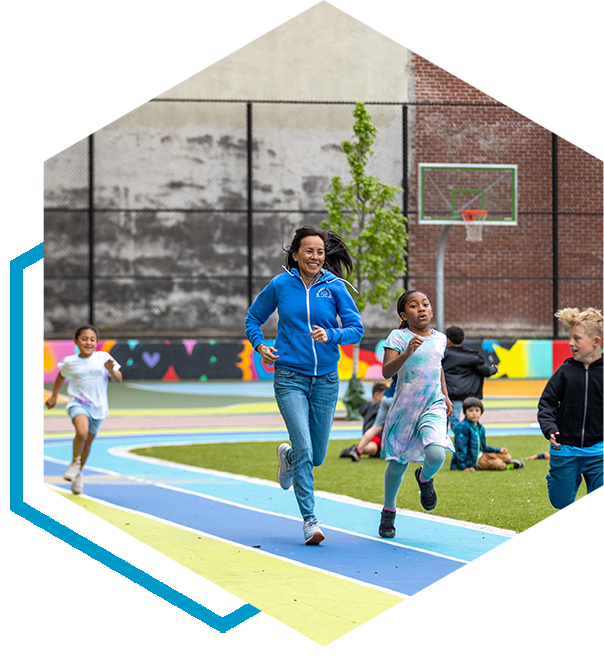Green Community Schoolyards
"Transforming schoolyards for all"

Other Contributors
Studio HIP, New York City Department of Environmental Protection, New York City School Construction Authority
Location
New York City, USA
THE PROBLEM
New York City, like many large coastal cities, faces the twin problems of flood risk and lack of access to critical green space, particularly in underprivileged neighborhoods.
The Big Idea
Transform hundreds of asphalt schoolyards across all five boroughs into green, flood-mitigating public spaces.
Life Changing Impact
School children and community members design and steward their own green community spaces. More than half of New Yorkers now live within walking distance of public green spaces.
Ripple Effect
Featured in New York City’s heat remediation and extreme flooding response plans, inspiring similar projects nationwide.
New York City has long been known as the “Concrete Jungle” for its towering skyscrapers and congested streets, but recently rising temperatures and extreme storm events have heightened the need for green spaces. The Green Community Schoolyards project expands access to green space, fosters long-term community ownership through a participatory design process, and improves New York City’s resilience to heat and flooding.
In 2004, the Trust for Public Land and the City of New York came together to create the Green Community Schoolyards project, transforming asphalt schoolyards in underserved areas into vibrant, green, flood-mitigating spaces that better serve students but are also available for community use.
In selecting sites for Green Community Schoolyards, the project employs a data-driven approach aimed at maximizing both social and climate resilience benefits. High-priority sites are selected based on climate risks, social vulnerability indicators, neighborhood income levels, and other social and climate factors.
School children are the primary designers of their own schoolyards, applying their learning on stormwater management concepts, such as rain gardens and permeable turf fields, into their designs.
Schoolyards are opened to the public outside of school hours, often becoming community centers, strengthening bonds within neighborhoods through events like cultural festivals, movie nights, group yoga and live performances.
This project is featured in New York City’s heat remediation and extreme flooding response plans and Trust for Public Land has expanded it into a national program across 15 cities and 23 states, including non-urban areas and varying climates.
There is no prior existing relationship between the project and WRI. For full disclosure, please visit here.
By The Numbers
226 green schoolyards installed throughout all five boroughs
700,000 acres of impervious asphalt replaced with pervious surfaces
220,000 children and community members have directly benefited from new schoolyards
5,600 students participated in design and stewardship
5 million people now live within a 10-minute walk to a green space
1+ million gallons of stormwater diverted from each site every year

